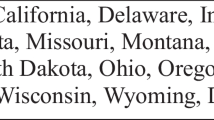Abstract
Coccidioidomycosis, the fungal infection caused by dimorphic Coccidioides sp., is typically diagnosed by histopathologic identification of spherules in affected secretions and tissues or by culture. These tests are reliable but time-intensive, delaying diagnosis and treatment. To evaluate a polymerase chain reaction (PCR) test developed to detect Coccidioides sp. in clinical specimens, we conducted a retrospective chart review of all patients (N = 145) who underwent Coccidioides PCR at our institution between April 27, 2007, and May 6, 2008, abstracting clinical, microbiologic, serologic, radiographic, treatment, and follow-up data. One hundred fifty-eight PCR tests (153 respiratory; 5 cerebrospinal fluid) produced 5 positive and 153 negative findings. Five of nine patients (56%) with confirmed or highly probable pulmonary coccidioidomycosis had a positive PCR on respiratory specimens, and four of nine (44%) had a positive culture. Among two patients with coccidioidal meningitis, none had a positive PCR, whereas Coccidioides sp. in fungal culture grew for one of two. Among six asymptomatic patients with probable coccidioidomycosis, none had a positive culture or PCR. Compared with culture of respiratory specimens, PCR demonstrated a sensitivity, specificity, positive predictive value, and negative predictive value of 75, 99, 60, and 99%, respectively. Coccidioides PCR appears accurate in identifying negative results, and its sensitivity is similar to that of fungal culture.
Similar content being viewed by others
Abbreviations
- Ag2/PRA:
-
Antigen 2/proline rich antigen
- CSF:
-
Cerebrospinal fluid
- IgG:
-
Immunoglobulin G
- ITS2:
-
Internal transcribed spacer 2
- MRSA:
-
Methicillin-resistant Staphylococcus aureus
- PCR:
-
Polymerase chain reaction
References
Stevens DA. Coccidioidomycosis. N Engl J Med. 1995;332:1077–82.
Saubolle MA. Laboratory aspects in the diagnosis of coccidioidomycosis. Ann N Y Acad Sci. 2007;1111:301–14.
Sutton DA. Diagnosis of coccidioidomycosis by culture: safety considerations, traditional methods, and susceptibility testing. Ann N Y Acad Sci. 2007;1111:315–25.
Schroter GP, Bakshandeh K, Husberg BS, Well R III. Coccidioidomycosis and renal transplantation. Transplantation. 1977;23:485–9.
Cohen IM, Galgiani JN, Potter D, Ogden DA. Coccidioidomycosis in renal replacement therapy. Arch Intern Med. 1982;142:489–94.
Blair JE, Logan JL. Coccidioidomycosis in solid organ transplantation. Clin Infect Dis. 2001;33:1536–44.
Assi MA, Binnicker MJ, Wengenack NL, Deziel PJ, Badley AD. Disseminated coccidioidomycosis in a liver transplant recipient with negative serology: use of polymerase chain reaction. Liver Transpl. 2006;12:1290–2.
Binnicker MJ, Buckwalter SP, Eisberner JJ, Stewart RA, McCullough AE, Wohlfiel SL, et al. Detection of Coccidioides species in clinical specimens by real-time PCR. J Clin Microbiol. 2007;45:173–8.
Wallace JM, Catanzaro A, Moser KM, Harrell JH II. Flexible fiberoptic bronchoscopy for diagnosing pulmonary coccidioidomycosis. Am Rev Respir Dis. 1981;123:286–90.
Williams PL. Coccidioidal meningitis. Ann N Y Acad Sci. 2007;1111:377–84.
Looney JM, Stein T. Coccidioidomycosis: the hazard involved in diagnostic procedures, with report of a case. N Engl J Med. 1950;242:77–82.
Pike RM. Laboratory-associated infections: summary and analysis of 3921 cases. Health Lab Sci. 1976;13:105–14.
Sewell DL. Laboratory-associated infections and biosafety. Clin Microbiol Rev. 1995;8:389–405.
Bialek R, Kern J, Herrmann T, Tijerina R, Cecenas L, Reischl U, et al. PCR assays for identification of Coccidioides posadasii based on the nucleotide sequence of the antigen 2/proline-rich antigen. J Clin Microbiol. 2004;42:778–83.
Johnson SM, Simmons KA, Pappagianis D. Amplification of coccidioidal DNA in clinical specimens by PCR. J Clin Microbiol. 2004;42:1982–5.
Umeyama T, Sano A, Kamei K, Niimi M, Nishimura K, Uehara Y. Novel approach to designing primers for identification and distinction of the human pathogenic fungi Coccidioides immitis and Coccidioides posadasii by PCR amplification. J Clin Microbiol. 2006;44:1859–62.
de Aguiar Cordeiro R, Nogueira Brilhante RS, Gadelha Rocha MF, Araujo Moura FE, Pires de Camargo Z, Costa Sidrim JJ. Rapid diagnosis of coccidioidomycosis by nested PCR assay of sputum. Clin Microbiol Infect. 2007;13:449–51.
Driebe E, Bowers J, Liu C, Schmoker M, Bosch C, Engelthaler DM. Counting cocci: quantitation of Coccidioides using real-time PCR. Presented at the 52nd Coccidioidomycosis Study Group Annual meeting. San Diego, CA; 2008.
Author information
Authors and Affiliations
Corresponding author
Rights and permissions
About this article
Cite this article
Vucicevic, D., Blair, J.E., Binnicker, M.J. et al. The Utility of Coccidioides Polymerase Chain Reaction Testing in the Clinical Setting. Mycopathologia 170, 345–351 (2010). https://doi.org/10.1007/s11046-010-9327-0
Received:
Accepted:
Published:
Issue Date:
DOI: https://doi.org/10.1007/s11046-010-9327-0




